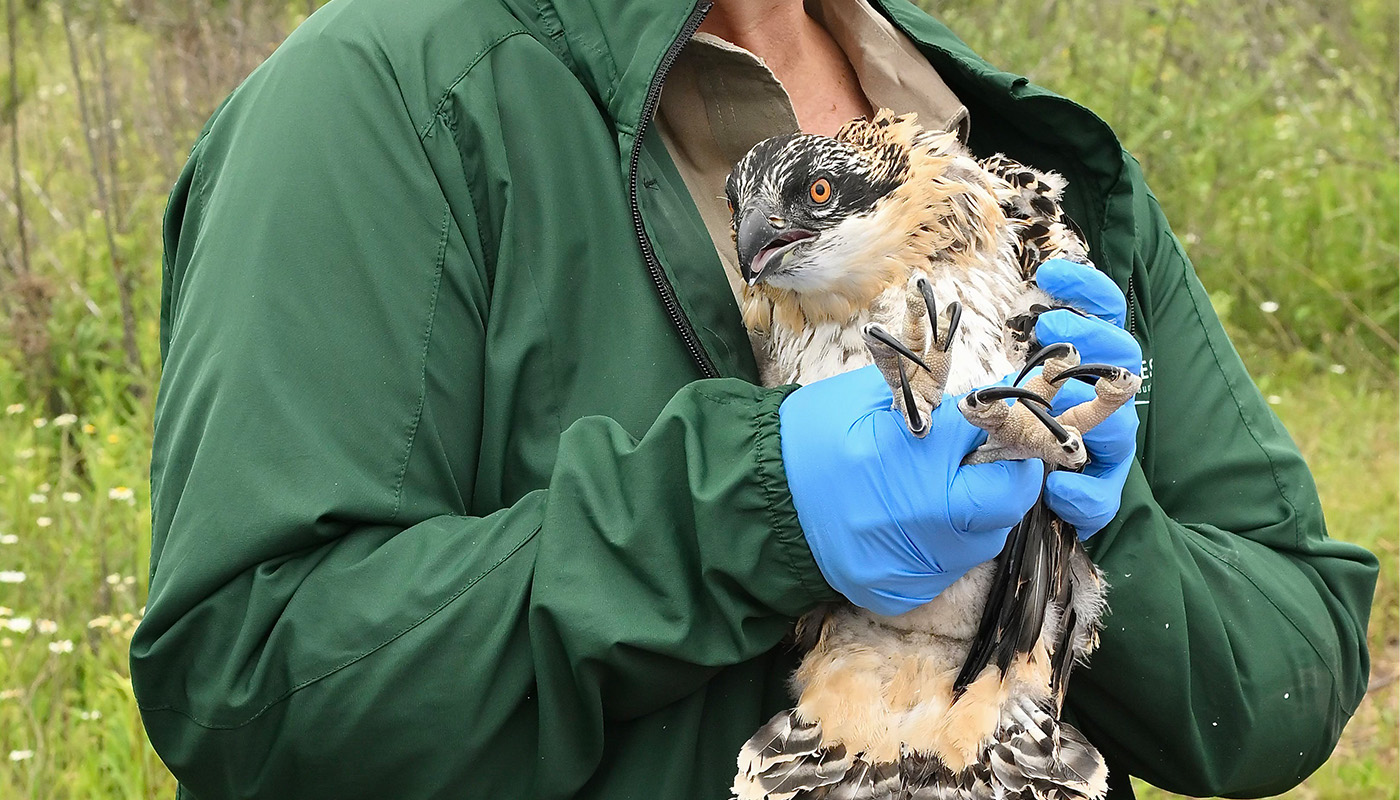This June, an injured osprey lay on the ground of a university campus in Bucaramanga, Colombia, a city nestled next to the northern part of the Andes Mountains. When someone walking by stopped to help and give it some water, they discovered a band around one of its legs—a band that had been put on a year earlier, more than 2,500 miles away, in the Forest Preserves of Cook County.
The local organization in Bucaramanga nurturing the raptor back to health followed standard procedures and sent the band’s information to the U.S. Geological Survey’s Bird Banding Laboratory in Laurel, Maryland. The lab sends their reports to the organization that originally banded the bird. In this case, it ended up on the desk of Forest Preserves of Cook County Senior Wildlife Biologist Chris Anchor.
“When I was told that it was Colombia, I was thinking Columbia, Missouri first,” says Anchor. “And when they told me it was actually Colombia, the country, I was rather incredulous.”
Back in June of 2023, Anchor and his team in the Resource Management department used a bucket truck at Sag Quarries in Lemont for a visit to one of the Forest Preserves’ 20 osprey nesting platforms. They measured and weighed the osprey chick, drew blood and checked it for overall signs of health. Just like they do about 20 to 30 times every year, they put an aluminum band with a unique identifier around the osprey chick’s leg. The team bands about 70 different bird species annually with the majority being warblers, finches and sparrows.
After birth, ospreys fly south during the next winter, typically to the Gulf Coast, but some travel all the way to South America. They remain there for two years as they become sexually mature, find a mate and return to their natal area.
Yet the chances of a banded bird flying that far and being found alive were beyond unlikely. “Very, very, very slight, as you might imagine,” Anchor says. “It doesn’t take much ciphering or statistical analysis to realize that. For a bird to make it all the way down to South America and then get found and then get reported is incredibly remote.”
The Forest Preserves osprey propagation program started in the late 1980s to help osprey populations recover from major declines due in part to DDT insecticide use from the 1950s to early 1970s. The osprey nesting platforms generally feature a 50-foot post with a predator guard, supporting a 40-inch-wide platform. These platforms are placed in areas where osprey have consistently tried to nest in trees without success.
“Every natural nest in a tree either blew down in a storm and or was destroyed by raccoons,” Anchor says. “Now we have the most successful urban osprey program in North America.”
Anchor said there is only one such long-distance journey by one of the Forest Preserves’ banded birds that sticks out in his mind. Back in 1986, a rough-legged hawk was legally harvested by a First Peoples in Minganie Regional County in Quebec, Canada, five years after being banded.
“This is as significant as that,” he notes. “We’ve had birds that we banded in the rookery at Baker Lake that were caught by other banders down in Florida and released, which is really neat, but the vast majority of birds don’t go to other countries, as you might imagine. At least as far as we know.”
The Forest Preserves spotlights unique flights on its online Bird Banding Map. Each trek lists the species, dates the bird was banded and found, and how it was found. To view the Forest Preserves Bird Banding Map, visit storymaps.arcgis.com/stories/a8d2e11a84cc4e439a9423f93b481813.
“It’s very rare in my profession that you can actually see an immediate result to something that you do,” says Anchor. “The vast majority we do in wildlife, for ecology, and somewhat in fisheries, we do it because we think or we know that it can help and we hope at some point down the line that it’s going to be successful. It’s very much a human syndrome to want immediate gratification to what we do. But that’s very rare in nature.”

